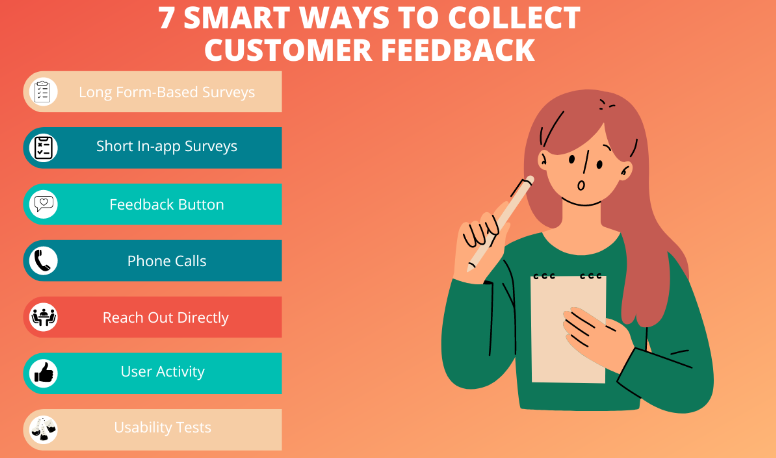Introduction to Customer Feedback
Customer feedback is a cornerstone in product development and improvement. It provides tangible insights into product performance, user satisfaction, and unmet needs. Solutions like How Customer Feedback fuelsProduct software streamline the process, making it easier to collect and analyze data efficiently. By leveraging these insights, companies can refine their offerings, align them better with market demands, and remain competitive in an ever-evolving market landscape.
Listening to customers is more than just a corporate courtesy; it is a strategic necessity for companies aiming for long-term success. Organizations that systematically capture and utilize feedback often see significant improvements in product quality, customer satisfaction, and operational efficiency. By prioritizing customer input, these businesses can stay ahead of market trends, anticipate customer needs, and prevent potential issues before they escalate. To harness these advantages, it’s crucial to understand the different types of customer feedback and their effective collection techniques.
Table of Contents
- Introduction to Customer Feedback
- Types of Customer Feedback
- Benefits of Incorporating Feedback
- Strategies for Collecting Feedback
- Analyzing Feedback
- Future Trends in Customer Feedback
Types of Customer Feedback
Direct Feedback: Comments, surveys, and direct communication. This type of
feedback is often the most straightforward, as it comes directly from the customer.
Methods to gather direct feedback include emails, phone calls, or interactions with
customer service representatives. This feedback is invaluable as it provides
specific details and suggestions from users directly interacting with the product or service. Indirect Feedback: Social media mentions and reviews. Indirect feedback provides insights into customer sentiment expressed in public forums. Unlike direct feedback, it is often unsolicited but can be equally informative. Monitoring platforms like Twitter, Facebook, and specialized review sites can reveal patterns and areas for improvement that formal surveys might miss.
Behavioral Feedback: User interactions and behavioral analytics. This feedback is based on how customers use the product, revealing patterns and preferences through data analytics. Companies can identify what is working well and what may need adjustment by analyzing metrics such as time spent on features, click-through rates, and user pathways. This data-driven approach allows for precise enhancements tailored to actual user behavior.
Benefits of Incorporating Feedback
Incorporating customer feedback offers numerous advantages, ranging from improving product features to enhancing overall customer satisfaction. According to Harvard Business Review, companies that embrace customer-centric strategies often experience significant revenue growth. This statistic underscores the financial benefits and competitive edge gained from being attuned to customer needs.
Listening to and incorporating customer feedback helps businesses create products that resonate more deeply with their target audience. This practice builds trust and fosters a culture of continuous improvement within the organization. Employees become more engaged when they see the positive impact of their efforts reflected in customer feedback, leading to better service and development initiatives. Moreover, a loyal customer base will likely advocate for the brand, resulting in organic growth and a solid market position.
Strategies for Collecting Feedback
- Conducting surveys and questionnaires. Surveys can be deployed through multiple channels like email, websites, and mobile apps. They are particularly effective for gathering structured, quantitative data. They can be tailored to address specific aspects of the product or service.
- Using feedback widgets on websites and apps. These widgets allow customers to provide feedback directly within the context of their user experience. This real-time feedback can be invaluable for identifying immediate issues and opportunities for improvement.
- Monitoring social media and review sites. Social listening tools enable businesses to track mentions and sentiments across social media platforms. This method captures unsolicited opinions and can help companies understand public perception and emerging trends.
- Implementing user testing sessions. Inviting customers to participate in beta testing or user experience sessions provides detailed insights into specific aspects of the product. These sessions help identify usability issues and areas where the product may fall short of user expectations.
Each of these strategies offers different advantages, and employing a combination can provide a comprehensive understanding of customer sentiments. For example, while surveys can offer quantitative data, social media monitoring allows for immediate, real- time feedback. User testing sessions, on the other hand, provide in-depth qualitative insights. The key is to leverage multiple feedback channels to capture a balanced and holistic view of customer experiences.
Analyzing Feedback
Analyzing customer feedback is a critical step that involves categorizing responses, identifying patterns, and prioritizing issues and suggestions. Advanced tools like sentiment analysis and data mining help distill large volumes of feedback into actionable insights. According to CNBC, integrating customer insights into business strategies is essential for driving innovation and maintaining a competitive edge.
An effective analysis process allows companies to proactively address immediate concerns and anticipate future needs and trends. This proactive approach can give businesses a competitive edge, enabling them to stay ahead in the market. Moreover, data-driven insights can guide strategic decisions, from feature updates to marketing campaigns, maximizing the impact of customer feedback.
Future Trends in Customer Feedback
The future of customer feedback lies in advanced AI and machine learning tools that offer deeper insights and predictive analytics. These technologies will revolutionize how companies understand and respond to customer needs, making the feedback loop faster and more efficient. As these tools become more sophisticated, the ability to tailor products to specific customer segments will increase, leading to higher satisfaction and loyalty.
Staying updated with these trends will be crucial for businesses aiming to maintain a competitive edge. Integrating these advanced tools will streamline the feedback process and provide richer, more nuanced insights that can drive significant product improvements. Companies that invest in these technologies now will be well-positioned to excel in an increasingly customer-centric market landscape. The rise of AI-powered feedback analysis tools will enable businesses to predict customer needs proactively, enhancing their ability to innovate and deliver exceptional value continuously.


